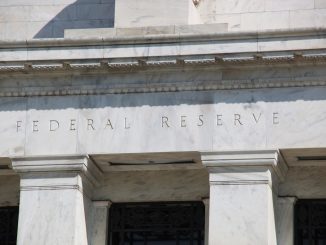In a move that aligns with market expectations, the Federal Reserve on Thursday announced a quarter-percentage-point reduction in its benchmark interest rate, setting the federal funds rate within the range of 4.50% to 4.75%. This latest adjustment in monetary policy reflects the Fed’s ongoing effort to fine-tune economic conditions, balancing between fostering growth and controlling inflation.
The decision, made unanimously by the members of the Federal Open Market Committee (FOMC), comes as the U.S. economy shows signs of robust activity. According to the FOMC’s statement, economic activity “has continued to expand at a solid pace,” indicating resilience in the broader economy despite various global and domestic challenges.
The rationale behind this rate cut appears to be twofold. First, there’s an evident easing in the labor market. While not signaling distress, the Fed noted that the job market has “generally eased,” which might mean a slight cooling off from the previous intense hiring sprees. This adjustment could be seen as a preemptive measure to support employment levels, ensuring that any slowdown does not turn into a more significant downturn.
Secondly, inflation, which had spiked to levels not seen in decades, is now showing progress towards the Fed’s long-term target of 2%. By reducing the interest rates, the Fed aims to keep this progress on track, ensuring that inflation does not dip too low but moves sustainably towards the target. This careful calibration is part of the Fed’s dual mandate to achieve both maximum employment and price stability.
The rate cut, although anticipated by many in the financial markets, has broader implications. Lower interest rates typically make borrowing cheaper, which can encourage spending and investment by both consumers and businesses. This could lead to an increase in economic activity, potentially offsetting any slowdown signals from the labor market. For businesses, lower borrowing costs might translate into new investments in capital or expansion, while for consumers, it could mean cheaper loans for significant purchases like homes or cars, or even lower rates on credit card debts.
However, this decision also comes with its set of considerations. Lower rates might pressure the dollar’s value internationally, affecting trade dynamics, especially if other countries do not follow suit with similar monetary easing. Additionally, while beneficial for borrowers, savers might find the return on their savings diminished, which could affect retirement planning or other financial strategies relying on interest income.
The Fed’s action today reflects a cautious yet proactive approach towards managing the U.S. economy. It’s a testament to the central bank’s role in not just reacting to economic changes but also in steering economic expectations and behaviors.
With inflation in sight of the 2% target and economic growth maintaining a solid pace, the Fed seems to be navigating a path that keeps the economy buoyant while guarding against overheating or cooling too rapidly. This delicate balance will be crucial as the global economic landscape continues to evolve, with potential impacts from international trade, geopolitical tensions, and other external factors.
- Bulenox: Get 45% to 91% OFF ... Use Discount Code: UNO
- Risk Our Money Not Yours | Get 50% to 90% OFF ... Use Discount Code: MMBVBKSM
Disclaimer: This page contains affiliate links. If you choose to make a purchase after clicking a link, we may receive a commission at no additional cost to you. Thank you for your support!




Leave a Reply